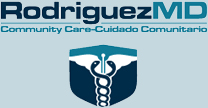Lactose Intolerance or Dairy Allergy?

Having a sensitivity to dairy products is fairly common in the U.S. It can occur in childhood but often becomes more noticeable as people age. Two common conditions are lactose intolerance and dairy allergy. What is the difference, and how can these problems be managed?
Lactose Intolerance
People whose bodies do not produce enough of the digestive enzyme lactase will be lactose intolerant. This means they cannot break down the sugar, or lactose, found in dairy products. The condition becomes more noticeable as people age, because some people produce less of the enzyme lactase as they get older. According to the National Institutes of Health, more than one third of American adults are lactose intolerant. This may prevent them from getting enough calcium and vitamin D in their diet. Lactose intolerance can be annoying and uncomfortable, but it is not dangerous.
When the body can’t break down lactose, people usually begin experiencing symptoms within 15-30 minutes after eating dairy. Typical symptoms are bloating, gas, abdominal pain, cramping, and diarrhea. Some people may be able to eat small amounts of dairy without having problems. However, when they eat greater amounts, the symptoms get worse. Lactose intolerance does not involve the immune system. No antibodies are produced, and there is no inflammatory response. The symptoms are generally limited to the GI tract.
Lactose intolerance can be treated several ways. One way is to avoid dairy products altogether. Another option is to buy dairy products, such as milk and ice cream, that are “lactose-free”. Dairy free products are also widely available in grocery stores. In addition, there are special digestive enzymes, like Lactaid, that can be taken with meals containing dairy. This allows those with lactose intolerance to eat dairy foods with little or no discomfort.
Dairy Allergy

A dairy allergy, or sensitivity, is an immune response to one of the proteins found in cow’s milk, typically whey or casein. It usually results in histamines being released, which generates an inflammatory response in the body. This can produce a range of symptoms including GI issues, skin rashes, eczema, hives, congestion, joint pain, headaches, wheezing, and a tightness in the throat. Dairy allergies are more commonly diagnosed in children. Those with a dairy allergy should avoid all foods containing dairy. This includes reading food labels to determine if milk or any milk proteins are contained in the product.
Next steps
If you suspect you may have lactose intolerance or an allergy to dairy, talk to your healthcare provider. There are medical tests that can be done to determine the cause of your problem. The physicians at RMD Primary Care are experienced in diagnosing lactose intolerance and allergies. Contact us today to schedule an appointment.








